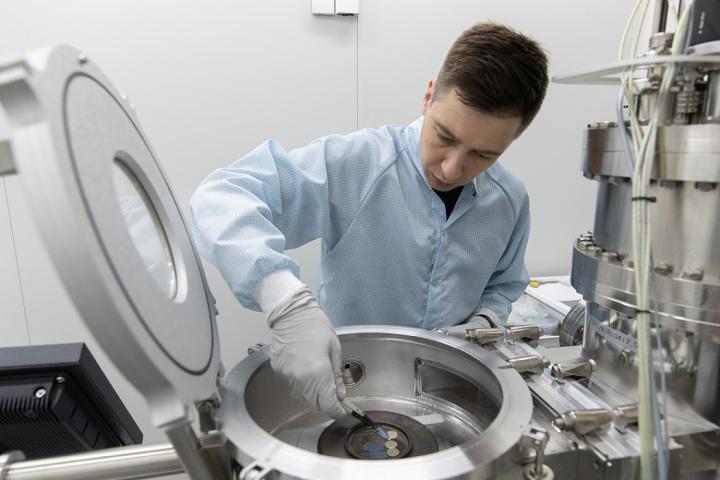Researchers developed a method to determine the electrochemical capacity.

Credit: Peter the Great St.Petersburg Polytechnic University
Researchers of Peter the Great St.Petersburg Polytechnic University (SPbPU) developed a new approach to determine the best electrode materials composition for Solid-state lithium-ion batteries. The results of the study were published in the first quartile journal Nanomaterials, MDPI. The Russian Science Foundation supports the project.
The development of miniature devices such as sensors and Internet of things (IoT) devices requires establishing small and complex power supplies with a high energy density. According to experts, traditional technologies for lithium-ion battery production reach their limits. It is difficult to reduce the size and control the shape of the power source any further in the required nano and micron dimensions. Meanwhile, micro and nanoelectronic technologies, such as Atomic Layer Deposition, can assist in producing miniature solid-state lithium-ion batteries with high specific energy.
Studying the new nanoscale materials for electrodes of lithium-ion batteries, the research group of St. Petersburg Polytechnic University developed a method to determine the electrochemical capacity of each component of the “nickel-cobalt oxide” system. Transition metal oxides have a high capacity and relatively low costs, which is required to develop lithium-ion batteries. In the investigation of thin films obtained by atomic layer deposition (ALD) were used as anode materials and demonstrated a high charge capacity at high current densities.
“We obtained nickel-cobalt oxide materials in the wide range of compositions from nickel oxide to cobalt oxide and proposed a method to determine the contribution of the capacity of each of the electrochemically active components of the charge/discharge process. This multipurpose technique can be used to determine the best materials’ compositions for lithium-ion batteries” notes Dr. Maximov of High School of Materials Physics and Technologies, Institute of Mechanical Engineering, Materials and Transport SPbPU.
In the future, the scientists plan to use their developments to create improved cathodes and solid electrolytes to produce a prototype of thin-film solid-state lithium-ion batteries.
###
Media Contact
Raisa Bestugina
[email protected]
Related Journal Article
http://dx.




